The EuropeanaPhotography exhibition that was held in Pisa between 11 April and 2 June 2014 was a great success. The format of the exhibition, arranged by responsible partner Promoter at the premises of the Museum of Graphics, captured a genuine interest of the public: over 5.400 visitors came to Palazzo Lanfranchi to enjoy the masterpieces of early photography selected by the archives of EuropeanaPhotography project, and to discover through the lens of the first photographers how life was in Europe before WW1. Next to the photos, original vintage photographic equipment items show how the art of photography and techniques rapidly evolved in a very short period of time.
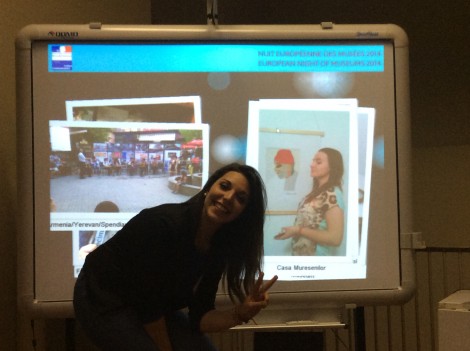
the Night of the Museums at Palazzo Lanfranchi
The flux of visitors at Palazzo Lanfranchi was more or less continuous since the opening (11th April), but a boom of visits was registered on the 17th May during the European Night of the Museums. In this occasion the exhibition was open till midnight and almost 800 visitors crowded the vintage rooms of the palace where the photographs are hosted, in a truly charming environment.
The contemporary twist of the exhibition, which is based on the most advanced technologies of digitization and print, and which features also a free App for a virtual tour of the rooms, enhances the astonishing quality and value (both cultural and artistic) of the photographic masterpieces that the 19 partners of the project chose as “best of their bests”.
During the Night of the Museums, countless visitors with their inseparable smartphones took their own museumselfies, to converge in the European digital event Kaleidoscope: a digital wall showing the selfies of the visitors in the participant Museums all over Europe.
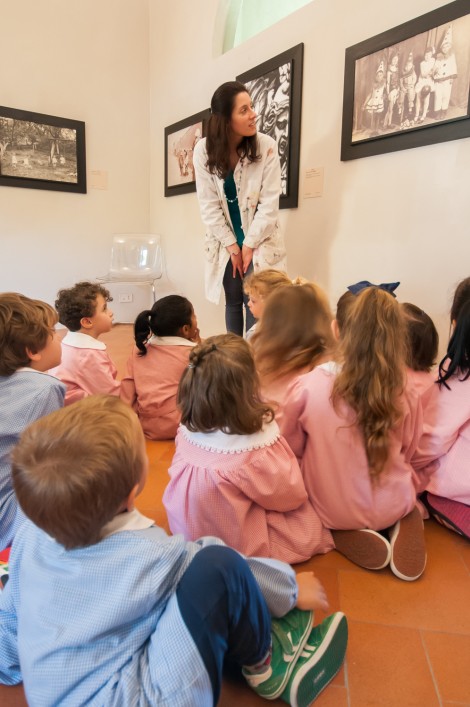
Very young students enjoy the photos of All Our Yesterdays
The Pisa exhibition was also a great moment for education and social inclusion: in facts, students and children have been participating in laboratories and guided tours to discover the Europe of their grand-grandfathers. Moreover, visits of the exhibition was organized by the project “Segni fra le mani” of the University of Pisa. This project involves old people suffering the Alzheimer disease, and utilizes art, music and other creative activities to stimulate communication and help delaying the progress of the disease.
During the exhibition, a digitization station operated by photographic professionals allowed the visitors to digitize their own family photos, in order to contribute to the digital preservation of the memory and local cultural heritage.
A new exhibition will be organized in Pisa in December 2014 to show these photos and share them with the whole citizenship.
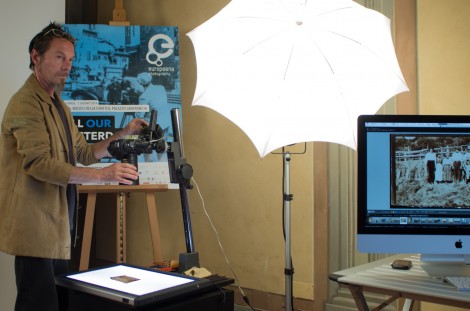
The digitization station, operated by Rudy Pessina
At the same time, All Our Yesterdays will be travelling through Europe: after the Pisa event, the exhibition is coming to Belgium, hosted by project coordinator KU Leuven.
For those who cannot visit the exhibition in physical, a virtual exhibition is also available on line (and in the AppStore) in the website www.earlyphotography.eu
[VIDEO: ALL OUR YESTERDAYS – Presentation and Interviews (Italian Language)]






















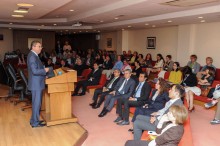
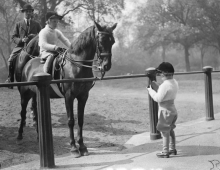
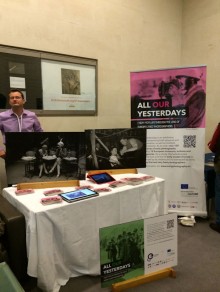
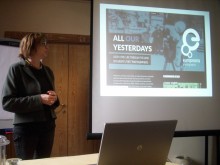
 If you have interesting news and events to point out in the field of digital cultural heritage, we are waiting for your contribution.
If you have interesting news and events to point out in the field of digital cultural heritage, we are waiting for your contribution.

















